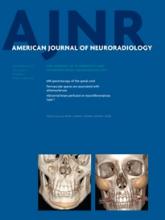Three recent publications report the neutral results of 3 randomized studies (Synthesis Expansion, Interventional Management of Stroke [IMS] III, and Mechanical Retrieval and Recanalization of Stroke Clots Using Embolectomy [MR-RESCUE]) comparing IV thrombolysis therapy with the endovascular treatment (EVT) of acute ischemic stroke (AIS).1⇓–3 The simultaneous publication of these 3 reports might lead to the erroneous conclusion that endovascular treatment has no place in the management of AIS. However, the role of endovascular therapy for the treatment must be more carefully considered, given the tremendous evolution that imaging and endovascular treatment modalities have undergone over the past several years. Careful analysis of the IMS III, Synthesis, and MR-RESCUE studies shows that these reports have shortcomings as the result of changes in imaging and device technology and study designs.
Over the years, treatment of AIS has evolved to include IV thrombolysis and endovascular treatment. Several randomized studies of IV thrombolysis indicated little to no protection of ischemic brain before it was first reported that IV tPA administered within the first 3 hours after stroke onset had protective effects.4
The endovascular treatment of AIS has evolved, moving from intra-arterial (IA) chemical thrombolysis to mechanical thrombectomy. IA chemical thrombolysis was evaluated in several randomized trials that demonstrated its efficacy and safety.5 The next advancement in endovascular treatment of AIS was mechanical thrombectomy. Originally, this was performed with no specific tools by the injection of saline within the clot, disruption of the clot with a microguidewire, and “angioplasty” of the clot with remodeling balloons. Subsequently, dedicated, first-generation devices, such as the Merci and Penumbra devices, were developed to catch or aspirate the clot by different means. These first-generation devices were followed by second-generation devices (eg, “stentrievers” such as Solitaire), which were developed to promptly restore blood flow through retrieval of the clot.6
Until now, there have been no randomized, controlled trials (RCTs) that compared endovascular treatment with IV tPA for the management of AIS. IMS III, Synthesis, and MR-RESCUE are the first RCTs comparing EVT with IV tPA for the management of AIS and therefore merit attention.
IMS III is an international, phase 3, randomized, open-label clinical trial with a blinded outcome, comparing a combined approach of IV tPA followed by endovascular treatment with standard IV tPA treatment. From August 2006 to April 2012, 656 participants in 58 centers underwent random assignment (approximately 2 patients per center per year). The trial was stopped early because of futility, as defined by the prespecified aim (10% difference in Rankin scale score of ≤2 at 90 days). The proportion of patients with good outcome was slightly but not significantly higher in the EVT group (40.8% in the EVT arm and 38.7% in the IV tPA arm). There was also no significant difference between the 2 groups in mortality rate at 90 days as well as in the rate of symptomatic intracerebral hemorrhage within 30 hours after initiation of tPA. During the long inclusion period (close to 6 years), imaging and endovascular treatment modalities underwent a tremendous evolution, and utilization of this new technology was only partially implemented in the IMS III protocol, leading to major weaknesses in assessing the data. Only 306 of 656 participants (46.6%) had preoperative CTA, and it was not used for inclusion. Clearly, the inclusion of patients without a major arterial occlusion in a randomized trial dealing with endovascular recanalization illustrates an important weakness of the IMS III trial. Moreover, in patients for whom CTA was obtained, the rate of partial or complete recanalization was different in the EVT and IV tPA groups (81% and 35%, respectively, for an occlusion in the internal carotid artery; 86% and 68% for an M1 occlusion; and 88% and 77% for an M2 occlusion). Therefore, in terms of recanalization, mechanical thrombectomy performed better than IV tPA alone for all locations, and, as demonstrated in IMS III, the proportion of patients with good clinical outcome increased with greater reperfusion, indicating that when analyzed this way, mechanical thrombectomy is associated with good clinical outcome. Another important limitation of the IMS III study is that the modalities of endovascular treatment were heterogeneous: IA tPA administration (37.8% of patients), mechanical thrombectomy with first-generation devices (34.3%), and only 1.2% with second-generation devices. As the SWIFT trial has clearly demonstrated, the second-generation devices are more efficacious than first-generation devices in terms of both recanalization and clinical outcome.6 Thus, the results of IMS III were outdated before they were published.
Synthesis is an Italian randomized, multicenter clinical trial with a blinded end point, comparing standard IV tPA treatment (initiated within 4.5 hours after symptom onset) to endovascular treatment (within 6 hours after symptom onset). Patients who were assigned to the EVT group did not receive IV tPA. All EVT modalities were authorized. The demonstration of vessel occlusion was not a precondition for inclusion in this trial. From February 2008 to April 2012, 362 patients underwent random assignment (3.5 patients per center per year). The primary end point (disability-free survival at 90 days, mRS 0 or 1) was similar in both groups (30.4% in the endovascular group and 34.8% in the IV tPA group). Symptomatic intracranial hemorrhage within 7 days occurred in 6% of patients in both groups. Additionally, death at 90 days was not significantly different between the 2 groups.
Although the inclusion period was shorter in Synthesis than in IMS III (4 versus 6 years), the same important limitations were encountered in Synthesis. Modern CT or MR modalities were not used to visualize vessel occlusion or evaluate penumbra. Additionally, EVT was mostly IA tPA, and second-generation devices were not commonly used (13.9%). Two other important limitations were encountered in Synthesis. Patients with NIHSS score as low as 2 were included, and they have a very high probability of having a good recovery at 3 months regardless of treatment given. Also, IV tPA was not given in the endovascular group. Synthesis compared IV tPA treatment with isolated endovascular treatment and not with combined IV tPA treatment and mechanical thrombectomy. As a consequence, the endovascular group received treatment 1 hour later than the IV tPA group, which, in part, explains the relative equivalence of endovascular treatment and IV tPA treatment. Given this, it is not surprising that the Synthesis study reconfirms the IMS III finding regarding the limited efficacy of endovascular treatment performed with obsolete tools.
The MR-RESCUE trial was a small, phase 2b, randomized, controlled, open-label, multicenter trial conducted at 22 sites in North America (0.7 patient per center per year). Patients between the ages of 18–85 years with NIHSS scores of 6–29 who had a large-vessel, anterior circulation ischemic stroke were randomly assigned within 8 hours after the onset of symptoms to undergo either mechanical embolectomy (with first-generation devices) or to undergo standard medical care. All patients underwent pretreatment multimodal CT or MR imaging of the brain, which permitted stratification according to the presence of a favorable penumbral pattern versus a nonpenumbral pattern. Among 118 eligible patients (recruited over 7 years), 64 were assigned to the embolectomy group and 54 were assigned to the standard care group. In total, 68 of 118 patients (57.6%) had a favorable penumbral pattern after pretreatment imaging. The 118 patients were classified into 4 groups: embolectomy/penumbral (34 patients); standard care/penumbral (34 patients); embolectomy/nonpenumbral (30 patients); and standard care/nonpenumbral (20 patients). Statistical analysis testing to determine whether there was an interaction between treatment assignment and penumbral pattern determined no significance. Mean 90-day mRS scores were not significantly different between the groups. The number of patients with good outcome at 90 days (mRS 0–2) was also not significantly different between the groups. Death rates also did not significantly differ.
Unlike the IMS III or Synthesis trials, pretreatment evaluation was more precise, with CTA or MRA used to depict large-vessel proximal anterior circulation occlusion, and multi-modal CT or MR imaging of the brain was used to evaluate penumbral status. However, the MR-RESCUE trial still had several drawbacks. The number of patients in each group was small (≤30 patients), leading a low statistical power for their analysis. As in Synthesis and IMS III, first-generation thrombectomy devices were used, and it is now clear that efficacy is limited with these devices relative to second-generation thrombectomy devices. Additionally, the management of penumbral patterns is not easy to use in real time. Despite the development of specific models, the study software processed only 58% of cases successfully in real time. Additionally, the final pattern assignment changed after core laboratory postprocessing in an alarmingly high percentage of cases (8%). Also, the use of 2 different imaging modalities (CT and MR) to evaluate penumbra further complicates the findings in this study. It should also be noted that the time to enrollment for all patients in this study, regardless of assigned group, was relatively long (from 5.2–5.8 hours), and this must have played a large role in the overall disappointing clinical outcomes in the trial.
In summary, IMS III, Synthesis, and MR-RESCUE are 3 important trials that perfectly illustrate the difficulty of randomization for techniques that are in rapid evolution.
The main weaknesses of these trials are:
Long period of inclusion (all studies): Difficulty in the recruitment of patients was encountered in most RCTs dealing with endovascular treatment. Mechanical thrombectomy is not yet a validated treatment, and, by not including all their relevant patients in RCTs, physicians take the risk of having this technique not validated.
Small number of patients per center per year (all studies).
Inappropriate preoperative imaging including absence of CTA or MRA to detect an occlusion of a major arterial trunk (IMS III and Synthesis).
No evaluation of the salvageable brain with perfusion CT or MR (IMS III and Synthesis).
Comparison of IV tPA to EVT alone (Synthesis and MR-RESCUE): It does not appear to be the best course of action because the combined approach (endovascular treatment plus IV tPA) allows the physician to start treatment early and to synergize the efficacy of chemical and mechanical thrombolysis.
Heterogeneity of the endovascular techniques used, with most of them no longer used. IA administration of fibrinolytics, as well as treatment with first-generation thrombectomy devices, has become outdated with the development of second-generation, stent-based thrombectomy devices. The clinical impact of the use of these novel devices has been impressively illustrated by the recent SWIFT trial.6
Analysis of the IMS III, Synthesis, and MR-RESCUE studies reveals what steps must be taken next in evaluating the role of endovascular therapy for the treatment of AIS. Analyzing these studies clearly shows that the selection of patients (clinical status, initial extension of ischemic lesion, depiction of arterial occlusion depicted, evaluation of salvageable brain) and the therapeutic methods evaluated are key elements that must be addressed in the design of future studies.
Acknowledgments
We thank Nagesh Uppuluri, PhD, MBA, for editorial assistance in the preparation of the manuscript.
Footnotes
ICMJE Disclosures: Laurent Pierot—RELATED: Consulting fee or honorarium: Codman, Covidien, MicroVention, Penumbra, Sequent. Jan Gralla—RELATED: Consulting fee or honorarium: Global PI of the STAR study, therefore consultant for Covidien*; UNRELATED: Grants/grants pending: Peer-reviewed funding of the Swiss National Fund.* Christophe Cognard—UNRELATED: Consultancy: Codman, Covidien/ev3, MicroVention, Sequent, and Stryker. Philip White—UNRELATED: Consultancy: MicroVention, Terumo; Grants/grants pending: Acandis, Codman, Covidien/ev3, MicroVention,* Terumo,* Comments: Grant pending for phase II trial. I am also co-PI for PISTE trial, which has some industry support, but that goes to the University of Glasgow, not my institution; Payment for Lectures (including service on speakers bureaus): Covidien/ev3, Codman (*money paid to institution).
REFERENCES
- © 2013 by American Journal of Neuroradiology











